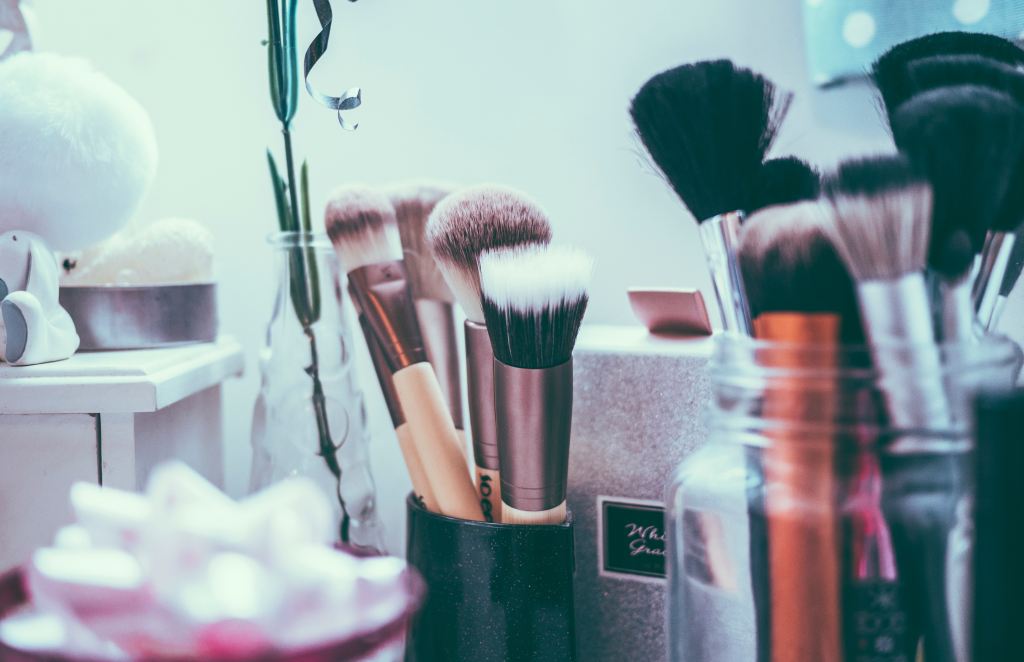By Sheeva Azma
If you’re a science communicator interested in the science of beauty (think haircare, skincare, makeup, toiletries, and beauty services), you can put your #SciComm skills to work as a science copywriter for the beauty industry.
Tweet
As a science copywriter, I feel lucky that I’ve been able to combine my passions of science and beauty. I’ve often helped explain the scientific benefits of beauty products, and helped break down the science in an accessible way. If, like me, you’re a makeup aficionado with a science background, you can actually get paid to write about beauty as a science writer.

The beauty industry relies heavily on science – so it needs science communicators!
Science affects everything we do, and that includes our beauty regimens. The beauty industry is large, including both products such as makeup, skincare, haircare, and toiletries, as well as services. What’s more, advances in the beauty industry, especially relating to product development and formulation, as well as advances in medical technology, are often driven by scientific advances.
As an undergrad at MIT, I loved staying up to date with the beauty space, but I also loved research. One summer, I worked in a chemical engineering lab studying cancer. The goal of my project was to understand the ways that cancer affected the cells of the extracellular matrix, the scaffolding around the body’s cells and tissues. One day, I was chatting with one of the “real” scientists in the lab about skincare products. She was telling me that most skincare products don’t really work because you can’t replace the collagen in your skin when it breaks down due to aging. To do so would require that you deliver collagen directly to the tissues where it is breaking down. Collagen is a protein, so if you take a collagen supplement, it would get broken down by your digestive system. If you applied collagen as a skin cream, it would not be able to be absorbed into the skin deeply enough to be delivered to where the collagen is breaking down.
These insights from my summer research job helped me better understand drug delivery, but they also helped improve my skincare regimen – or at least save money buying beauty products that would never work. Maybe then it’s no surprise that a few years later, notable drug delivery researcher Robert Langer, an MIT chemical engineering professor who helped invent the mRNA vaccine, also developed the haircare line Living Proof.

Tips for getting into beauty copywriting as a science communicator
As a science copywriter in the beauty space, I love to help improve science literacy while helping people understand the complexities of the beauty products and services they are considering. If you’re interested in applying your science writing skills to become a beauty copywriter, I’ve provided some advice below.
- Consider starting a science of beauty blog (or social media account). If you like writing about beauty, consider creating a space on the internet where you can review products, talk about the science of beauty, and more. This will help you find your writer’s voice on beauty copywriting as a science communicator. It can also help you develop a portfolio which you can pitch to beauty companies to do copywriting work for them.
- Lean into the science. As a person with a science background, you’re uniquely suited to explain the scientific aspects of beauty products, which people don’t normally associate with science. You can look to the scientific literature and critically analyze things, and that’s something that people without a science background don’t learn how to do. You can get paid a lot to write evidence-based beauty articles. I have had clients pay me double just for being able to do a simple – but very specific – Google Scholar or PubMed search!
- Have fun with it. The beauty space can be a great space for science communicators because you can develop skills for talking about science to a general audience. You can apply the science communication principles you learn to beauty to come up with informative, yet fun content that will inform and entertain your readers. Even if you don’t decide to become a beauty copywriter, you can learn science communication skills that can help you better explain your science.
- Follow your favorite beauty brands on social media. While I can’t say it’s necessarily easy to break into the beauty copywriting space, following your favorite beauty brands can help familiarize you with their brand and communications style, and you can also reach out to their marketing directors and pitch your services once you have a writing portfolio.
Let’s face it, science sells. If you can unpack the complex science of beauty products and/or services for a general audience, that can be very persuasive. It’s also a good way to help debunk misinformation as a scientist. By engaging with the beauty world and lending your scientific insights, you are helping people live better lives through science – or, at least, helping them save money on products that are not backed by scientific evidence.
Do you do beauty copywriting as a scientist? What advice do you have for aspiring beauty copywriters with a science background? Chime in below in the comments!
One thought on “Writing about Beauty as a Science Copywriter”